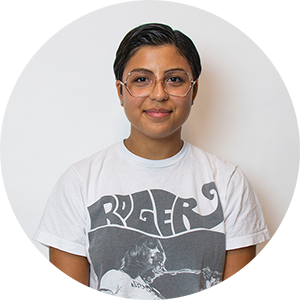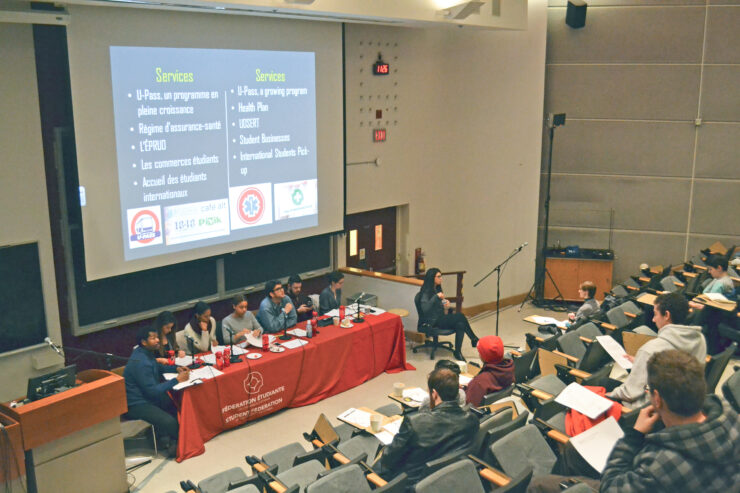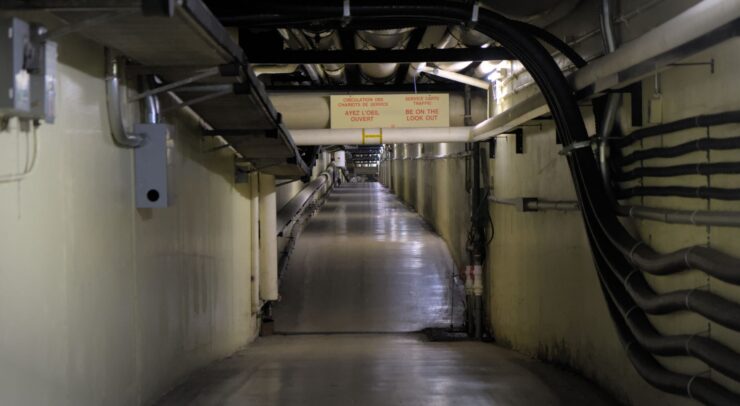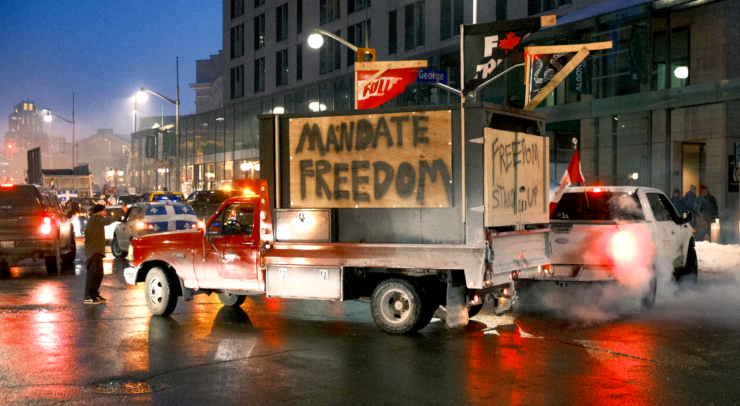“This generation of women reinstitutes my lost sense of pride, my dignity is being restored,” said Professor Mojab.
The University of Ottawa (U of O) held a round table on Jan. 30 to discuss the current state of uprisings in Iran. The event was hosted by the faculty of social science (FSS), with four speakers sharing their thoughts on the events that have taken place since September 2022.
On Sept. 16 2022, Mahsa Amini, a young Kurdish woman, was brutally beaten by Iran’s morality police for supposedly wearing her Hijab incorrectly. This led to massive uprisings and protests in Iran over the rights of women, and the way they are forced to dress in Iran.
The four scholars who were invited to speak at the round table included Concordia University professor, Homa Hoodfar; University of Toronto professor, Shahrzad Mojab; activist and member of Iranian Women’s Association, Mina Favar; and U of O professor, Thomas Juneau.
The speakers were chosen based on their expertise and were given ten minutes to bring forward their perspectives and analysis of the current situation in Iran. Here’s what you missed:
Professor Hoodfar, the first speaker, gave a contextual history of social and political movements in Iran leading up to “Women, Life, Freedom,” and their influence on this new movement.
“It wasn’t a surprise for us… in fact, Iranian men and women have been very politicized from early on,” stated Hoodfar. “The first demonstration against forcing women to wear hijabs happening in 1979,” said Hoodfar.
“The killing of Mahsa came on the back of the really disastrous economic and environmental situation,” Hoodfar continued. “The regime, in order to show that they are in charge and they are in control, they started to reimpose the restrict hijab.”
Hoodfar also believes that the difference between this uprising and others is that it began in the margins, and was not organized in the same way that past demonstrations were. Additionally, Hoodfar said previous demonstrations were built on the hopes for negotiation with or reform of the regime. She does not see that in that happening with the current “Women, Life, Freedom” movement.
“So change that has to happen in a revolution has different layers, the social and cultural level, and a vision of society that is different. So what we have in this uprising so far, it’s clear that cultural, social change has happened, we’re creating a different vision — they passed wanting religion to be part of politics,” Hoodfar explained.
Professor Juneau took a foreign policy analysis and regional security angle, focusing on what may lie ahead for Iran in the next six to 12 months. Juneau outlines four possible scenarios.
The first was a return to the status quo. Juneau described this as a “pre-September” situation.
“Basically, the regime wins through repression. Discriminate repression, targeted repression, repression in the cyber realm. We know very well now that this regime is very good at that, and it is not shy at doing that.”
However, Juneau believes that this has a “very low likelihood” as “too many things have changed.”
The second scenario involves the regime surviving, while the protests continue.
“What this means is that eventually another explosion is inevitable, and possibly a more violent one than what we’re seeing right now,” he continued. “This is a very unstable scenario. It is also, I think, the most likely.”
Juneau described the third scenario as an internal coup.
“This IRGC, the revolutionary guards take over. They see a window, they exploit the instability right now, and they cease power building on years of expanding political, economic, and obviously military power in recent years and decades,” he said.
Juneau does not believe this scenario is very likely. He mentioned that many serious analysts predict it, however, and that the relationship between the IRGC and the regime is too entangled through clerical elements.
Juneau introduced a “diluted version” of scenario three, stating that this would take place around the time of succession, when the current supreme leader dies.
“There’s been rumours of his health for a while that the IRGC would exploit the very unstable moment of the transition to, if not necessarily completely cease power, at least intensify the increase in its power, perhaps by supporting a weaker candidate. That would be more malleable.”
Scenario four, Juneau said, is the success of the revolution and the failure of the regime. Juneau believes, at this point, that this has the lowest probability.
“The regime simply controls too much force at this point for this to be a plausible scenario, at least in the short to midterm.”
He touched on a number of indicators that would need to take place in order for this to be possible. “Large scale strikes and massive protests, defections within the regime that break down in the chain of command in the security services or the military.”
While scenario exercises like this could be helpful to imagine what the future could hold, Juneau reminded audience members that we must be humble in our predictions.
The next speaker, Mina Favar, spoke from her point of view as a feminist and a woman who was born and raised in Iran post-1979 revolution. Favar said the current uprisings are signs of a feminist revolution, and she believes that it is a continuity of past movements.
Favar stated one sign that this uprising is a feminist revolution is the absence of any religious slogans. She recalled, during the Green Movement in 2009, that protestors posed questions to the government and shouted “Allah Akbar” (“God is the greatest”) on rooftops.
“This time there is no question, and they want the regime change. This time not a single slogan; they just want the regime change. That’s pretty clear.”
Another sign, Favar said, is that women are including men in the movement, and protecting women by showing up.
“Not protecting as, ‘just because they’re women and maybe they cannot protect themselves,’ but they were there to protect them, as they were giving the stage to women to be the leader, and to shout and chant their slogans.”
“The other thing is cultural pluralism… the first town, the first cities that were involved were the Kurdish cities. But then in Tehran, and then in Baluchestan… and we see how they are hand in hand, and if there is a repression — if there is a civil crackdown in one ethnic minority, another part of the country — they are there as solidarity,” said Favar.
Favar also noted that this is the first time wherein the LGBT communities are visible in this movement, even with the very real risk they are taking. Additionally, Favar stated another sign of this feminist movement is that there is no leader. She mentioned this has advantages and disadvantages.
“The positive part of this uprising, without a leader, is that it’s like it has many arms, so it’s stronger. It encourages those who are participants in this revolution, either inside or outside of Iran, to not leave the responsibility to the reflections of one single person.”
Favar later said a negative aspect of having no leader is that it leaves room for confusion, and that perhaps some people might think silence means the country has calmed down.
She concluded by saying, “I believe that this freedom, our freedom, is only possible through our unity, and the sisterhood, no matter where on the planet we live.”
Professor Mojab, spoke last, giving a very personal account of her experience and relationship with Iran and its uprisings. Mojab described her experiences of escaping Iran in 1983.
“I belong to the generation of women targeted by both the secular and theocratic regimes. Our bodies were inscribed, tested, dressed, undressed, shaped, and shaped as part of the projects of nation-state building,” said Mojab.
“In my resettling and rerouting struggle in exile, even as an intellectual, I have been discrete about the pain and joy of of these unsettling years of resistance,” she continued.
Professor Mojab broke down the aspects of this revolution that are clear in just the headlines we have read over the past few months.
“Jina, Mahsa Amini, a 20-year-old, Kurdish woman of Iran, was arrested for improper veiling by the Morality police, and was brutally killed while in custody on Sept. 16, 2022. Let’s think about this sentence. This brief headline news contains 3 significant elements of the Islamic State. Violent oppression of 43 years. Gender, improper failing. Kurds, Jina, the suppression of the Kurds and national minorities, and the state machinery of violence: morality police.”
Professor Mojad recalled her experiences of protesting in Iran in the early 1980s, and how she searches for herself when looking at photos of the current protests.
“I was the generation who wanted change to end the misery for millions of people, but we were robbed of that revolution. Our naivete and idealism cost the lives of our comrades, who were executed in the eighties or forced into exile [by the] thousands.”
“This generation of women reinstitute my lost sense of pride, my dignity is being restored,” said Professor Mojab.
Following Professor Mojab’s personal account and perspective of the “Women, Life, Freedom” movement, the floor was opened to the audience for questions.
The Fulcrum asked the four members of the round table to what extent the international community’s support and protest can impact this movement.
Professor Juneau took a skeptical approach. While in theory, he supports efforts of democracy in the Middle East, in practice, he believes it’s much more difficult.
“In many cases, the efforts are in practice, not well-intentioned… in the case of Iran, rule number one is do no harm. Ways to do harm is to support wrong actors … Who deserves support and who doesn’t? And figuring that out is extremely difficult.”
Favar believes that there are many things that we can do.
“Be in solidarity with the Iranian diaspora … the Iranian try to convince the European Union to put IRGC on the list of terrorists … What the International community can do is put pressure to isolate the Iranian government, to close their embassies all over the world,” said Favar.
Professor Hoodfar took a separate stance from the other two speakers.
“I don’t think other states should interfere or plan for change. I think Iranians have shown they are capable of doing it. But what we can do, as an international community, we keep the issue on the public agenda to discuss it.” Additionally, Hoodfar believes that universities should create a space for discussion.
With censorship at a high, western media outlets struggle to release updates about the current situation in Iran. However, social media account @persianswithpurpose, is one source that has been working to spread information about this Iranian revolution.






